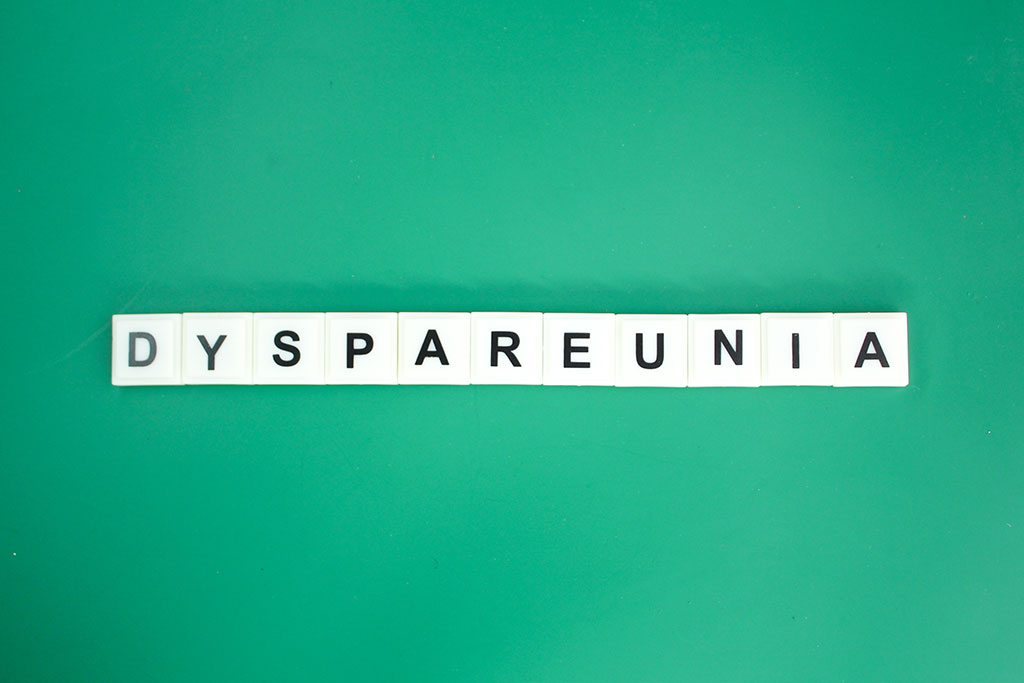Causes of Dyspareunia
Physical Factors: Numerous physical factors can contribute to dyspareunia. Vaginal dryness, inadequate arousal, or insufficient lubrication may result in friction and discomfort during intercourse. Conditions such as vaginismus, where the vaginal muscles involuntarily contract, and pelvic floor disorders can also contribute to painful intercourse.
Endometriosis: Endometriosis is a condition where tissue ics.com/in/en/female-infertility/Endometriosimilar to the lining of the uterus grows outside the uterus. During sexual activity, this tissue can cause pain and discomfort.
Infections and Inflammation: Infections affecting the genital area, such as yeast infections or sexually transmitted infections (STIs), can lead to inflammation and discomfort during intercourse. Conditions like pelvic inflammatory disease (PID) can cause long-term pelvic pain, affecting sexual intimacy.
Hormonal Changes: Fluctuations in hormonal levels, particularly during menopause, can lead to vaginal dryness and thinning of the vaginal walls, resulting in painful intercourse due to reduced lubrication and increased sensitivity.
Medical Treatments: Certain medical treatments, such as radiation therapy or hormonal cancer treatments, can have side effects that impact sexual function. Surgical procedures in the pelvic region may also contribute to dyspareunia.
Pelvic Floor Disorders: Conditions affecting the pelvic floor muscles, such as pelvic floor dysfunction or spasm, can lead to pain during penetration or intercourse. Pelvic floor physical therapy may be beneficial in addressing these issues.
Adhesions or Scarring: Surgical procedures, such as pelvic surgeries or C-sections, can lead to adhesions or scarring that may cause pain during intercourse.
Allergies or Irritants: Allergic reactions or sensitivity to products, such as latex condoms, lubricants, or spermicides, can lead to irritation and pain during intercourse.
Interstitial Cystitis: Interstitial cystitis is a chronic condition characterized by bladder and pelvic pain. It can cause discomfort during sexual activity.
Ovarian Cysts: Large or ruptured ovarian cysts may cause pain during intercourse if they affect the pelvic region.
Psychological Factors: Emotional and psychological factors are crucial in sexual health. Conditions like anxiety, depression, past trauma, or relationship issues can contribute to pain during intercourse. Addressing these psychological aspects is often a vital component of effective dyspareunia treatment.
It’s important to note that the causes of dyspareunia can vary, and an accurate diagnosis requires a thorough medical evaluation. Individuals experiencing pain during sexual activity should consult with healthcare professionals, such as gynecologists or sexual health specialists, to identify the underlying cause and determine an appropriate treatment plan.
Symptoms of Dyspareunia
Dyspareunia can manifest through various symptoms, impacting the physical and emotional aspects of an individual’s well-being. Here are common symptoms associated with dyspareunia:
Pain During Intercourse: The primary symptom of dyspareunia is pain experienced during sexual activity. This pain can range from mild discomfort to a sharp, intense sensation, depending on the underlying cause.
Burning or Aching Sensation: Individuals with dyspareunia may describe a burning or aching sensation during or after intercourse. This discomfort can persist even after the sexual activity has concluded.
Pelvic Pain: Some individuals may experience pelvic pain not only during intercourse but also at other times. This constant discomfort can significantly impact their quality of life.
Difficulty Inserting Tampons or Undergoing Pelvic Exams: Women with dyspareunia may find it challenging to insert tampons or undergo pelvic examinations due to the associated pain. This can lead to avoidance of routine gynecological care, impacting overall health.
Postcoital Pain: Pain may continue after sexual activity has ended, causing discomfort that lingers for a variable period following intercourse.
Painful Pelvic Exams: Women with dyspareunia may find it challenging to undergo pelvic examinations due to the associated pain, impacting routine gynecological care.
Avoidance of Sexual Activity: Ongoing pain during intercourse may lead to avoidance of sexual activity, creating emotional distance between partners and affecting the overall quality of relationships.
Emotional Distress: The persistent pain associated with dyspareunia can lead to emotional distress, impacting mental health and relationships. Anxiety and avoidance of sexual activity may further exacerbate the condition.
Impact on Quality of Life: The persistent pain associated with dyspareunia can have a profound effect on an individual’s overall quality of life, leading to decreased sexual satisfaction, relationship strain, and potential psychological consequences.
It’s essential to note that dyspareunia symptoms can vary based on the underlying cause, and a comprehensive assessment by healthcare professionals is necessary for accurate diagnosis and appropriate management. Individuals experiencing pain during sexual activity are encouraged to seek timely medical attention to address the physical and emotional aspects of dyspareunia and work toward effective treatment and resolution.
Dyspareunia Treatment
Medical Intervention: Addressing underlying medical conditions is crucial. Appropriate medications can treat infections and inflammations, while hormone therapy can manage hormonal imbalances. Consultation with a healthcare professional is essential to determine the suitable course of action.
Pelvic Floor Physical Therapy: Pelvic floor physical therapy involves exercises and techniques to relax and strengthen the muscles in the pelvic region. This therapy can be particularly beneficial for individuals with pelvic floor disorders contributing to dyspareunia.
Counseling and Psychotherapy: Psychological factors often play a significant role in dyspareunia. Counseling and psychotherapy can help individuals explore and address emotional issues, anxiety, or past traumas that may be contributing to the pain.
Lubricants and Moisturizers: For individuals experiencing vaginal dryness, the use of water-based or silicone-based lubricants during intercourse can provide relief. Regular use of vaginal moisturizers may also help maintain adequate vaginal moisture.
Communication and Relationship Counseling: Open communication between partners is crucial. Relationship counseling can help couples navigate the emotional impact of dyspareunia, fostering understanding and support.
Conclusion
Dyspareunia, though a challenging condition, is treatable. Identifying the causes, recognizing symptoms, and seeking timely intervention are essential for effective management. Medical professionals, including gynecologists, psychologists, and physical therapists, provide comprehensive care. By addressing both the physical and psychological aspects of dyspareunia, individuals can regain control of their sexual health and enhance their overall well-being. It is important to emphasize that seeking professional help and fostering open communication are pivotal in the journey toward a fulfilling and pain-free experience.

